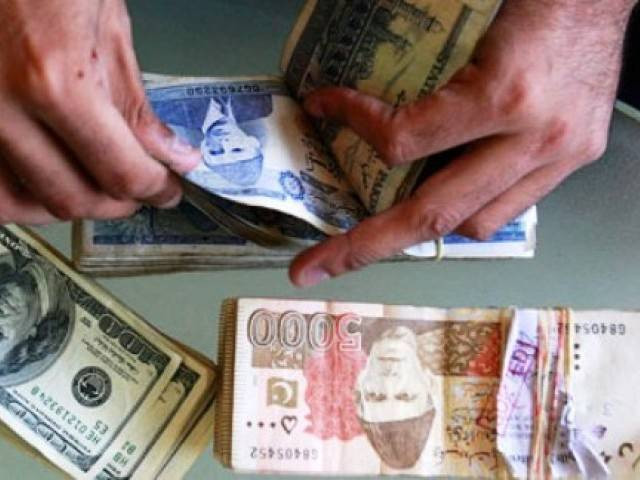Business
Eli Lilly, Novo Nordisk prepare to face off in the next obesity drug battleground

Eli Lilly and Novo Nordisk are preparing to take their rivalry to the next frontier of weight-loss medications: pills.
Both companies expect to launch oral obesity drugs in the U.S. next year, once regulators approve them. Daily pills could introduce more people to GLP-1s, the class of medicine that’s best known for weekly shots.
But after Lilly’s pill produced less weight loss than analysts had expected in a recent late-stage trial, it raised new questions about how widely the oral drugs will be adopted and which rival company will dominate the space.
Doctors will get a closer look at how Lilly and Novo’s pills compare in the coming months when Lilly releases the results of a head-to-head trial of the two, Lilly’s Chief Scientific Officer Dan Skovronsky said in an exclusive interview with CNBC. The study’s main objective is to measure how much the pills can reduce blood sugar levels in people with Type 2 diabetes, but it will also gauge weight loss.
“We wouldn’t have undertaken this head-to-head phase three randomized control trial unless we had a lot of confidence that orforglipron would fare well in comparison to oral semaglutide,” Skovronsky said.
Nikos Pekiaridis | Nurphoto | Getty Images
He cautioned against making comparisons across trials that didn’t directly compare the drugs, where Novo’s pill looks more effective and led to fewer discontinuations. Meanwhile, Novo’s Chief Scientific Officer Martin Holst Lange in a separate interview said the data speak for themselves.
Novo’s forthcoming obesity pill is an oral version of its weekly shot Wegovy; Lilly’s pill is a new drug called orforglipron that’s different from its shot Zepbound. Lilly’s shot is the gold standard in terms of efficacy, Skovronsky said. It can help people lose more than 20% of their body weight.
Neither Novo’s pill nor Lilly’s oral drug are as effective as Zepbound. At the highest dose, orforglipron has produced about 12% weight loss, while oral semaglutide has led to about 17%. That raises the question of how many people will opt for a pill if it means less weight loss.
Even so, Wall Street expects pills to make major inroads in the coming years. Analysts see oral drugs representing about 20% of the estimated $80 billion market for GLP-1 obesity drugs in 2030, according to data from Evaluate.
The logos of Danish drugmaker Novo Nordisk, maker of the blockbuster diabetes and weight-loss treatments Ozempic and Wegovy is seen outside theri building as the company presents the annual report at Novo Nordisk in Bagsvaerd, Denmark, on February 5, 2025.
Mads Claus Rasmussen | Afp | Getty Images
Skovronsky thinks that pills could eventually become the primary way that obesity is treated around the world, and that oral drugs could have a larger market share than injectables. He said most patients are more concerned about other factors like supply and convenience than how much weight they can lose, and he thinks orforglipron has the edge.
The treatment is a small molecule drug like most pills people know. It can be manufactured more easily than peptides, like the shots and Novo’s pill. And it doesn’t come with the food and water restrictions that come with Novo’s oral option, which requires people wait 30 minutes after taking the drug to eat and drink.
“When I look at the pills, orforglipron has no food effect, it’s a small molecule, so the manufacturing should be easier,” said BMO Capital Markets analyst Evan Seigerman. “But with new management at Novo Nordisk, I think [new Chief Executive Officer] Mike Doustdar is not going to just take this and be complacent about it. He’s going to lean in and ensure that this launch is successful.”
After seeing the results from Lilly’s obesity pill trial, Seigerman moved some of his market share estimate from orforglipron to oral semaglutide. Analysts cut their 2032 estimates for orforglipron by an average of about $4.5 billion between May and September, according to Evaluate. They now see sales of $14.56 billion that year.
Skovronsky said it’s harder to predict the market dynamics than the science.
“We did a good job predicting the science,” he said. “We said we’d make an oral that had safety, tolerability and efficacy that was similar to injectable GLP-1s. We did that. The science parts played out. Let’s see how the market plays out.”
Business
Trade talks: India, EU wrap up 14th round of FTA negotiations; push on to seal deal by December – The Times of India

India and the 27-nation European Union (EU) have concluded the 14th round of negotiations for a proposed free trade agreement (FTA) in Brussels, as both sides look to resolve outstanding issues and move closer to signing the deal by the end of the year, PTI reported citing an official.The five-day round, which began on October 6, focused on narrowing gaps across key areas of trade in goods and services. Indian negotiators were later joined by Commerce Secretary Rajesh Agrawal in the final days to provide additional momentum to the talks.During his visit, Agrawal held discussions with Sabine Weyand, Director General for Trade at the European Commission, as both sides worked to accelerate progress on the long-pending trade pact.Commerce and Industry Minister Piyush Goyal recently said he was hopeful that the two sides would be able to sign the agreement soon. Goyal is also expected to travel to Brussels to meet his EU counterpart Maros Sefcovic for a high-level review of the progress made so far.Both India and the EU have set an ambitious target to conclude the negotiations by December, officials familiar with the matter said, PTI reported.Negotiations for a comprehensive trade pact between India and the EU were relaunched in June 2022 after a hiatus of more than eight years. The process had been suspended in 2013 due to significant differences over market access and tariff liberalisation.The EU has sought deeper tariff cuts in sectors such as automobiles and medical devices, alongside reductions in duties on products including wine, spirits, meat, and poultry. It has also pressed for a stronger intellectual property framework as part of the agreement.For India, the proposed pact holds potential to make key export categories such as ready-made garments, pharmaceuticals, steel, petroleum products, and electrical machinery more competitive in the European market.The India-EU trade pact talks span 23 policy chapters covering areas such as trade in goods and services, investment protection, sanitary and phytosanitary standards, technical barriers to trade, rules of origin, customs procedures, competition, trade defence, government procurement, dispute resolution, geographical indications, and sustainable development.India’s bilateral trade in goods with the EU stood at $136.53 billion in 2024–25, comprising exports worth $75.85 billion and imports valued at $60.68 billion — making the bloc India’s largest trading partner for goods.The EU accounts for nearly 17 per cent of India’s total exports, while India represents around 9 per cent of the bloc’s overall exports to global markets. Bilateral trade in services between the two partners was estimated at $51.45 billion in 2023.
Business
Telcos network costs rise: Gap between expenditure and revenue exceeds Rs 10,000 crore; COAI flags rising network investment burden – The Times of India

The gap between telecom operators’ network expenditure and revenue continues to widen, prompting industry body COAI to defend calls for higher mobile tariffs, citing the increasing financial burden of network deployment on service providers.Speaking at the India Mobile Congress, Cellular Operators Association of India (COAI) Director General, SP Kochhar, told PTI that while the government has provided significant support to telecom operators through policies such as the right of way (RoW), several authorities continue to levy exorbitant charges for laying network elements.“Earlier, the gap until 2024 for infrastructure development and revenue received from tariffs was around Rs 10,000 crore. Now it has started increasing even further. Our cost of rolling out networks should be reduced by a reduction in the price of spectrum, levies etc. The Centre has come out with a very good ROW policy. It is a different matter that many people have not yet fallen in line and are still charging extremely high,” Kochhar said.He also defended the recent cut in data packs for entry-level tariff plans by select operators, stressing that the move was necessary given competitive pressures.Kochhar pointed out that competition among the four telecom operators remains intense, and there has been no significant trend suggesting that consumers are shifting towards low-cost data options.“There is a need to find ways to make high network users pay more for the data. Seventy per cent of the traffic which flows on our networks is by 4 to 5 LTGs (large traffic generators like YouTube, Netflix, Facebook etc). They pay zero. Nobody will blame OTT but they will blame the network. Our demand to the government is that they [LTGs] should contribute to the development of networks,” Kochhar said.He added that the investments made by Indian telecom operators are intended for the benefit of domestic consumers and are not meant to serve as a medium for profit for international players who do not bear any cost.
Business
Indias Real Estate Equity Inflows Jump 48 Pc In Q3 2025: Report

NEW DELHI: Equity investments in India’s real estate sector jumped 48 per cent year-on-year to $3.8 billion in the July-September period (Q3), a report said on Friday. This growth in inflow was primarily fuelled by capital deployment into land or development sites and built-up office and retail assets, according to the report by real estate consulting firm CBRE South Asia.
In the first nine months of 2025, the equity investments increased by 14 per cent on-year to $10.2 billion — from $8.9 billion in the same period last year.
The report highlighted that land or development sites and built-up office and retail assets accounted for more than 90 per cent of the total capital inflows during Q3 2025.
On the category of investors, developers remained the primary drivers of capital deployment, contributing 45 per cent of the total equity inflows, followed by Institutional investors with a 33 per cent share.
CBRE reported that Mumbai attracted the highest investments at 32 per cent, followed by Pune at around 18 per cent and Bengaluru at nearly 16 per cent.
Anshuman Magazine, Chairman and CEO – India, South-East Asia, Middle East and Africa, CBRE, said that the healthy inflow of domestic capital demonstrates the sector’s resilience and depth.
“In the upcoming quarters, greenfield developments are likely to continue witnessing a robust momentum, with a healthy spread across residential, office, mixed-use, data centres, and I&L sectors,” he added.
In addition to global institutional investors, Indian sponsors accounted for a significant part of the total inflows.
“India’s ability to combine strong domestic capital with global institutional participation will remain a key differentiator in 2026 and beyond,” added Gaurav Kumar, Managing Director, Capital Markets and Land, CBRE India.
CBRE forecasts a strong finish for the investment activity in 2025, fuelled by capital deployment into built-up office and retail assets.
For the office sector, the limited availability of investible core assets for acquisition indicate that opportunistic bets are likely to continue gaining traction, the report noted.
-

 Tech6 days ago
Tech6 days agoI’ve Tested Countless Mesh Systems. Here Are the Routers I Recommend
-

 Tech1 week ago
Tech1 week agoAmazon Prime Big Deal Days Is Next Week, but We Already Found 40 Early Deals
-

 Tech1 week ago
Tech1 week agoAll Hail the Surprisingly Versatile Packing Cube! These Are Our Favorites
-

 Tech6 days ago
Tech6 days agoJony Ive Says He Wants His OpenAI Devices to ‘Make Us Happy’
-

 Tech1 week ago
Tech1 week agoAI in an ‘industrial bubble’ but will benefit society: Bezos
-

 Business7 days ago
Business7 days agoInvestors are packing up; Pakistan must ask why | The Express Tribune
-

 Tech1 week ago
Tech1 week agoAmazon is overhauling its devices to take on Apple in the AI era
-

 Tech1 week ago
Tech1 week agoCombat Dry Indoor Winter Air With a New Humidifier












